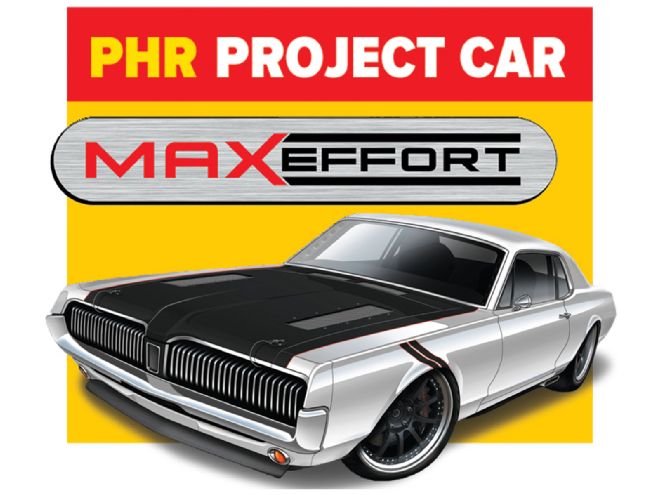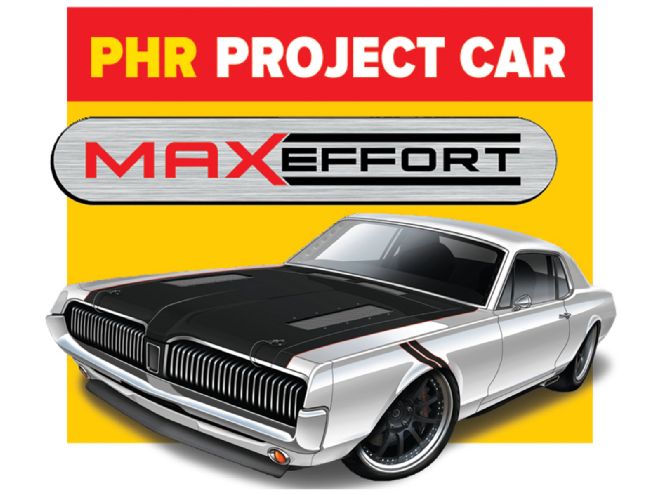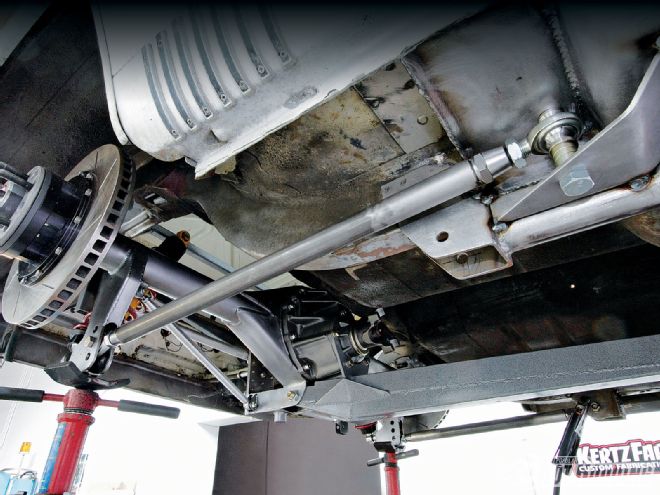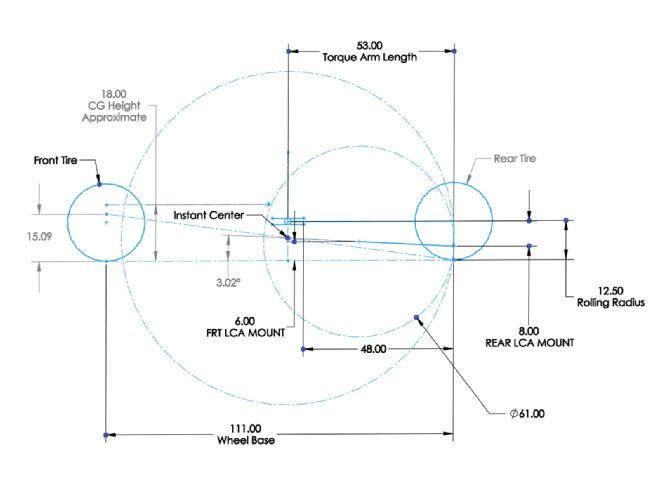
Here's the thing about solid-axle rear suspensions; fancy parts and exotic housings designed for track use aren't much good if we're not getting it to the ground. Hooking ain't just for drag racers; the quicker and harder we can get back on the throttle when exiting a corner, the harder we can accelerate and the faster our lap times will be. That's a consideration that becomes increasingly important as horsepower and torque levels rise, and with what we've got in store for project Max Effort, we knew we needed to do our homework.
 Renderings by Filip Trojanek
Renderings by Filip Trojanek
While torque-arm rear suspensions in general are great at transferring power and controlling axle rotation, there's more to it than just bolting one on-lower control arm angle and torque arm length both have a direct impact on forward bite. There's no single perfect setup that's best for all conditions, since vehicle specifics and track conditions vary (wet, dusty, temperature), but they can be overcome by fine-tuning, provided you've got the ability to adjust. There may be times when more forward bite trumps perfect roll geometry and makes the car much faster. Other times the track surface will be ideal, so emphasis can be redirected to optimize roll geometry to increase lap times. What's important is the ability to deal with changing conditions, and understanding how the adjustments affect the car.

To cope with all those variables, Max's rear suspension system is getting the upgrade to CorteX Racing's Ultimate LCAs that are designed to allow quick and accurate geometry adjustments that will dramatically alter the performance. To minimize the roll oversteer, our LCAs are growing several inches in length. Why? Long LCAs are beneficial because for a given change in height of either end of the arm, the angularity changes less than with a short arm. This keeps the suspension geometry more optimal in bump and roll modes.
 Cougar Geometry<br>
For a torque arm suspension, the instant center is located on a vertical line that passes through the chassis mount of the torque arm. When a line that passes through the lower control arm is extended to the vertical line determined by the torque arm, the point at which these two lines intersect is the instant center. Extending a new line from the contact patch of the rear tires through the instant center all the way up to the front of the vehicle determines the value we need to determine the antisquat. This new line determines a point on a vertical line passing through the center of the front tires. The height of this point divided by the center of gravity (times 100 for a percent) of the vehicle is the antisquat value.
Cougar Geometry<br>
For a torque arm suspension, the instant center is located on a vertical line that passes through the chassis mount of the torque arm. When a line that passes through the lower control arm is extended to the vertical line determined by the torque arm, the point at which these two lines intersect is the instant center. Extending a new line from the contact patch of the rear tires through the instant center all the way up to the front of the vehicle determines the value we need to determine the antisquat. This new line determines a point on a vertical line passing through the center of the front tires. The height of this point divided by the center of gravity (times 100 for a percent) of the vehicle is the antisquat value.
As far as the considerations on the chassis, the main variables we're concerned with are center of gravity (CG), height, tires, wheelbase, driving style, and track condition. By using a properly designed torque arm rear suspension system it's possible to set up a car with between 60 and 100 percent antisquat and still achieve excellent roll-steer characteristics. That means we can theoretically create a rear suspension with the best of all worlds: amazing turn-in, high mid-corner grip, and also exceptional bite when exiting a corner, allowing the driver to get on the throttle hard and early. Get all that right and lap times drop radically.
ANTISQUAT CENTER OF GRAVITY = 18 INCHES ANTISQUAT HEIGHT: ANTISQUAT: LCA ANGLE: PERCENTAGE: 5.00 11.4 1.1 64 5.25 12.4 1.6 69 5.50 13.3 2.1 74 5.75 14.2 2.6 79 6.00 15.1 3.0 84 6.25 16.0 3.5 89 6.50 16.9 4.0 94 6.75 17.8 4.4 99 7.00 18.7 4.9 104